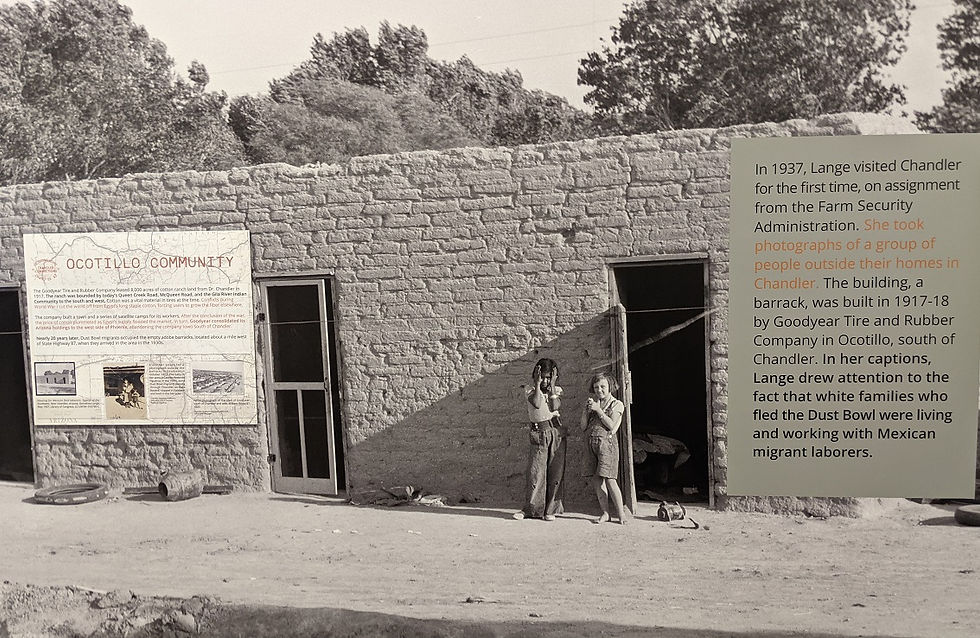'Voting Irregularities' 'Taint' Chandler Museum Exhibit
- Dan Bilder
- Apr 27, 2022
- 3 min read
Updated: Apr 27, 2022
Chandler was set up as an agricultural town and benefited from migration from the East and North. A new exhibition in the Chandler Museum explains this part of Chandler's history.
From early on the area of what is now the East Valley was a magnet for migrants from further East and North of the United States. A new exhibition at the Chandler Museum called Dust Bowl Migrants in Chandler, showcases this part of Chandler's history, especially during and just after the Great Depression of the 1930s. The Dust Bowl of the 1930s was a series of powerful dust storms which over a period of about 7 years inflicted massive damage on farms and eco systems in the great plains of North America, adding insult to the injury of the Great Depression.

The City of Chandler has its root in the actions of Dr. A J Chandler, a veterinarian. Posted in the area in the late 1880s, he soon departed, due to the hostile desert climate. Visiting farms that used irrigation from canals, Chandler realized that the desert could be made to bloom, and produce cash crops, by constructing a canal system to bring in water from up North. He returned to the area and started his life's work.
The resulting canal systems led to the creation of large farm, surrounding a small "urban" area comprising today's downtown Chandler. There were some ups and downs due to price fluctuations of the crops that were grown in Chandler, e.g. the so called cotton crash. Thanks to Chandler's insight and entrepreneurial zest, the supply of water to desert allowed rapid growth despite such obstacles.
Grinding migrant poverty
Particularly eye opening was the level of poverty that many of these migrants endured. The exhibition features a replica of a trailer of perhaps 30 sqft of area which housed a grandmother and four grand children, without electricity, running water or sanitation. The exhibit explains that the family were cotton picking migrants from Texas. The parents of the children are not shown in the picture and are presumed to have been working in the fields picking cotton.

The exhibition also explains FDR's New Deal experiments with socialism as people were put on collective farms in an effort to combat poverty. As it turned out, people soon rejected these ideas. The sharing of resources that were not owned by anyone did not work, for example. One worker who had lived on a co-op but then left said: your chickens would get all mixed up with those of other people and then there'd be trouble.
Voting irregularities
A particularly lovely, and interactive, exhibit allows visitors to choose between government housing and self-reliance. We observed slightly more chips in the box for self-reliance, though not by a big margin. However, results may have been skewed due to voting irregularities. As an example, we witnessed a small child - clearly under voting age and possibly unable to read - insert 2 chips in the self-reliance box and 1 chip in the government housing box.

We are currently investigating if and if so by how much such irregularities may have changed results. Stay tuned...
The Candler Museum is open to the public. As the museum is financed by donations and tax payer money, its visitors can enter free of charge. The museum shop offers a nice selection of souvenirs. The museum is located at 300 S. Chandler Village Drive in 85226. Open hours are Tuesday to Saturday 10am to 5pm and Sunday 1pm to 5pm.






Comments